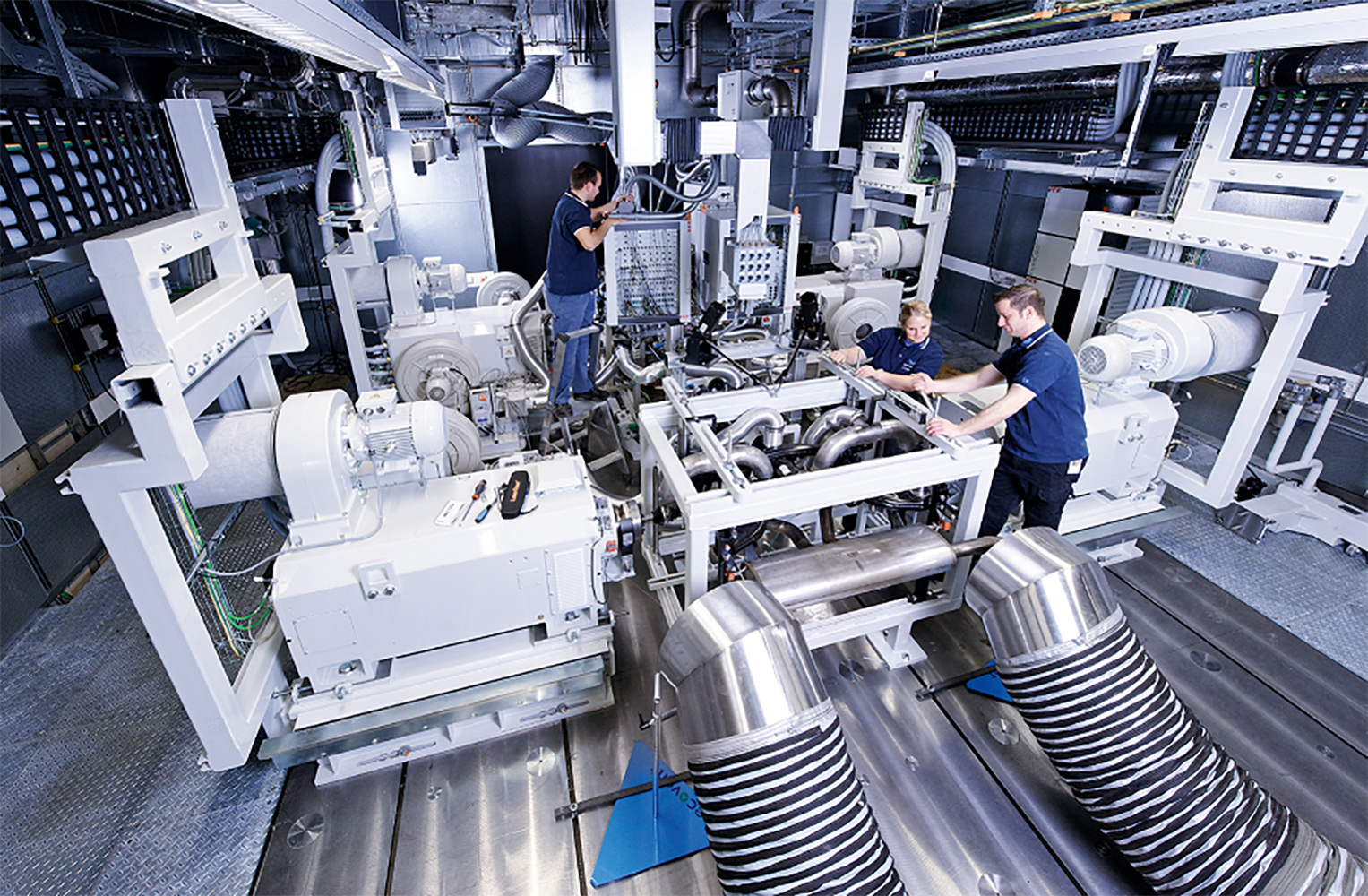
It will be several years before all cars on German, European and international roads are powered by CO2-free engines. Even if no new cars with combustion engines are allowed to be sold from 2025 onwards, it can be reasonably assumed that it will take until at least 2040 for (almost) all petrol- and diesel-driven cars to disappear from the roads. So, in order to meet the CO2 fleet emission targets by 2030, internal combustion engine vehicles will also have to become significantly more energy efficient.
In a research project initiated by the Research Association for Combustion Engines (FVV) known as ” ICE2025+,” scientists in the German cities of Aachen, Braunschweig, Darmstadt, and Stuttgart have studied “the extent to which the efficiency of petrol engines can be increased with the help of various technological combinations.” As it turns out, in all the powertrains that they studied, the internal combustion engine was supported by an electric drive. Particularly when it came to urban transportation. “But we carried out all the tests and simulations in such a way that there was still just as much electricity in the battery at the end of the journey as at the beginning,” explains Prof. Dr.-Ing. Christian Beidl, head of the Institute for Internal Combustion Engines and Vehicle Drives at the Technical University of Darmstadt. “This makes it possible to closely monitor how efficiency levels change as a result of various measures that have been carried out on the engine.”
Tight framework conditions
The project, which took about two and a half years to complete, began with the researchers determining which technical changes could significantly increase the efficiency of an engine. However, these changes had to meet two basic conditions: Firstly, they had to be “mature technologies” that stand a realistic chance of being introduced in series production before the year 2030. Secondly, they planned to examine combinations of several technologies, rather than individual technologies separately.
“Simply adding separate measures was not an option, because it does not take into account the interactions between technologies,” explains Prof. Dr.-Ing. Peter Eilts, head of the Institute for Combustion Engines at the Technical University of Braunschweig. As in combinations of variable compression and flexible valve timing, exhaust gas recirculation, charge motion control valves, pre-chamber ignition, water injection, and also the configuration of the engine as a long-stroke engine. These were all studied. The scientists validated the impact on fuel consumption on the basis of calculations first, then through various engine tests, and they also extrapolated other potential benefits based on their findings.

Finally, the researchers used the test and calculation results to determine the fuel consumption in various hybrid vehicles. And not only fuel consumption “for the official consumption data in the relevant test cycle.” but also in actual real-time road traffic. To do this, they selected a driving profile that meets the requirements of what are known as RDE (“Real Driving Emissions”) tests. “We succeeded in combining the technologies in such a way that the consumption figures under RDE conditions are lower than those determined in the WLTP test cycle (“Worldwide Harmonized Light-duty Vehicles Test Procedure“),” says Prof. Dr.-Ing. Stefan Pischinger, head of the Chair of Internal Combustion Engines at the RWTH Aachen University.
Efficiency increase of more than 40 percent
The results showed that more than 40 percent of the fuel’s energy can be used in real road traffic if available technologies for the combustion engine are optimally matched. For example, in a mid-size vehicle with a hybrid drive, the developed high-efficiency engine was already able to utilize 42 percent of the energy contained in the fuel. The overall efficiency rate could also be increased up to 46 percent through the use of synthetic fuels (e-fuels).
In the end, the researchers also looked into the potential of “lean-burn engines.” In other words, engines that run with a high level of excess air. They found that engine efficiency levels can be increased by two to three percentage points in extensive engine map ranges. “This means that an efficiency of 50 percent is within reach,” says Prof. Dr.-Ing. Michael Bargende, holder of the Chair of Vehicle Drives at the Institute of Vehicle Technology at the University of Stuttgart.
E-fuels as a “secret weapon“
The results of the research project are relevant for the discussion about the benefits of e-fuels, Bargende emphasizes. ” A maximum of 25 percent efficiency is assumed for the internal combustion engine in a lot of analyses. The research now shows that more than 40 percent can be achieved in actual traffic if the engine, transmission, and hybrid components are properly designed for the drive concept,” the scientist explains. “Running on synthetic fuels makes hybrid engines not only carbon-neutral but there is also hardly any difference in overall efficiency compared to other drive alternatives if the synthetic fuels are produced at locations with significantly more hours of sunshine or wind levels than is achievable in Germany.”
Meanwhile, FVV is already planning its next project. “ICE2030” is all about using hydrogen to increase efficiency rates. “Moreover, the synergies with other high-efficiency technologies, such as ultra-lean combustion, should also be examined.”

